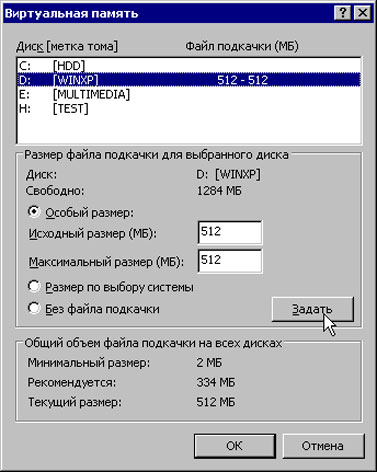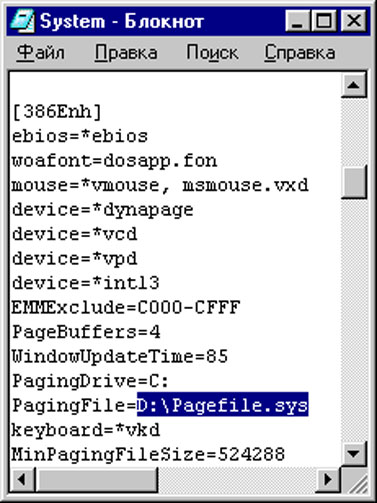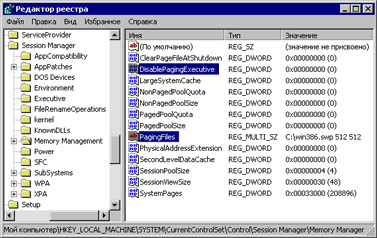When the operating system does not have enough RAM, it starts downloading the programs to the paging file. For example, if you run two large applications (like Photoshop and MS Word), and only one of them can fit in memory, the second application will be on the disk, in the swap file. Changing the parameters of this file, you can achieve significant acceleration of the system.
Click Win + Break or open "Control Panel> System", then select "Performance> Virtual Memory" in Win 9x or "More> Performance> Options> Advanced> Virtual Memory> Modify in Win XP". Then select manual settings (or a special size in Win XP), set the same size for the minimum and maximum, and click the "Set" button.

Swap file settings in Windows XP
Thus, you will reduce the fragmentation of the disk and get rid of the common problem, when there is not enough space due to the spreading paging file on the disk. Now it will occupy a fixed size, and it will be much easier to allocate disk space. A perfectly acceptable figure is a size 2-4 times larger than the amount of physical RAM. For example, if you have 512 MB of RAM, enter 1024-2048 MB as the size of the paging file. In the same window, you can select the disk on which the paging file will be located. On Windows warnings that these parameters can only be changed by specialists, do not pay attention.
When there is a lot of RAM, you can turn off the paging file by selecting "No paging file". For stable operation of most programs under Windows XP without a paging file you need at least 512 MB of RAM, and better than 1 GB. Windows 98 can be content with 256 megabytes of memory. After disabling the paging file, the system should run a little faster (assuming it has enough RAM).
If Windows NT and Windows 9x are installed on the same computer, you can assign one paging file for them, saving disk space. In the Windows 9x directory, locate the System.ini file and add the PagingFile = pagingfile name to its section [386Enh]. For example, if the Windows NT paging file is located on the D: drive, you would write:
PagingFile = D: \ Pagefile.sys
The PagingDrive parameter sets the disk for the paging file (you changed it in the Control Panel), but PagingFile takes precedence over it, so if PagingFile is installed, it does not matter what is written in PagingDrive. After performing this operation, the old Win386.swp swap file needs to be removed.

Change the system.ini file
You can do the opposite - make Windows 2000 / XP refer to the Win 9x swap file. To do this, change the PagingFiles key in the HKEY_LOCAL_MACHINE \ SYSTEM \ CurrentControlSet \ Control \ Session Manager \ Memory Management registry key. This key contains the sizes and names of paging files on different disks. For example, if Windows 98 is installed on the C: drive, and Windows 2000 / XP is on D, write the name C: \ Win386.swp instead of the D: \ Pagefile.Sys file name.

The paging file in the Windows 2000 / XP registry
In the same registry section, you can prevent the kernel and Windows 2000 / XP drivers from being downloaded to the paging file by setting the DisablePagingExecutive parameter to one. On computers that have enough RAM (about 512 MB or more), this setting should increase the speed of the work, because the system will not need to load the kernel from the hard disk.


Comments
Commenting on, remember that the content and tone of your message can hurt the feelings of real people, show respect and tolerance to your interlocutors even if you do not share their opinion, your behavior in the conditions of freedom of expression and anonymity provided by the Internet, changes Not only virtual, but also the real world. All comments are hidden from the index, spam is controlled.